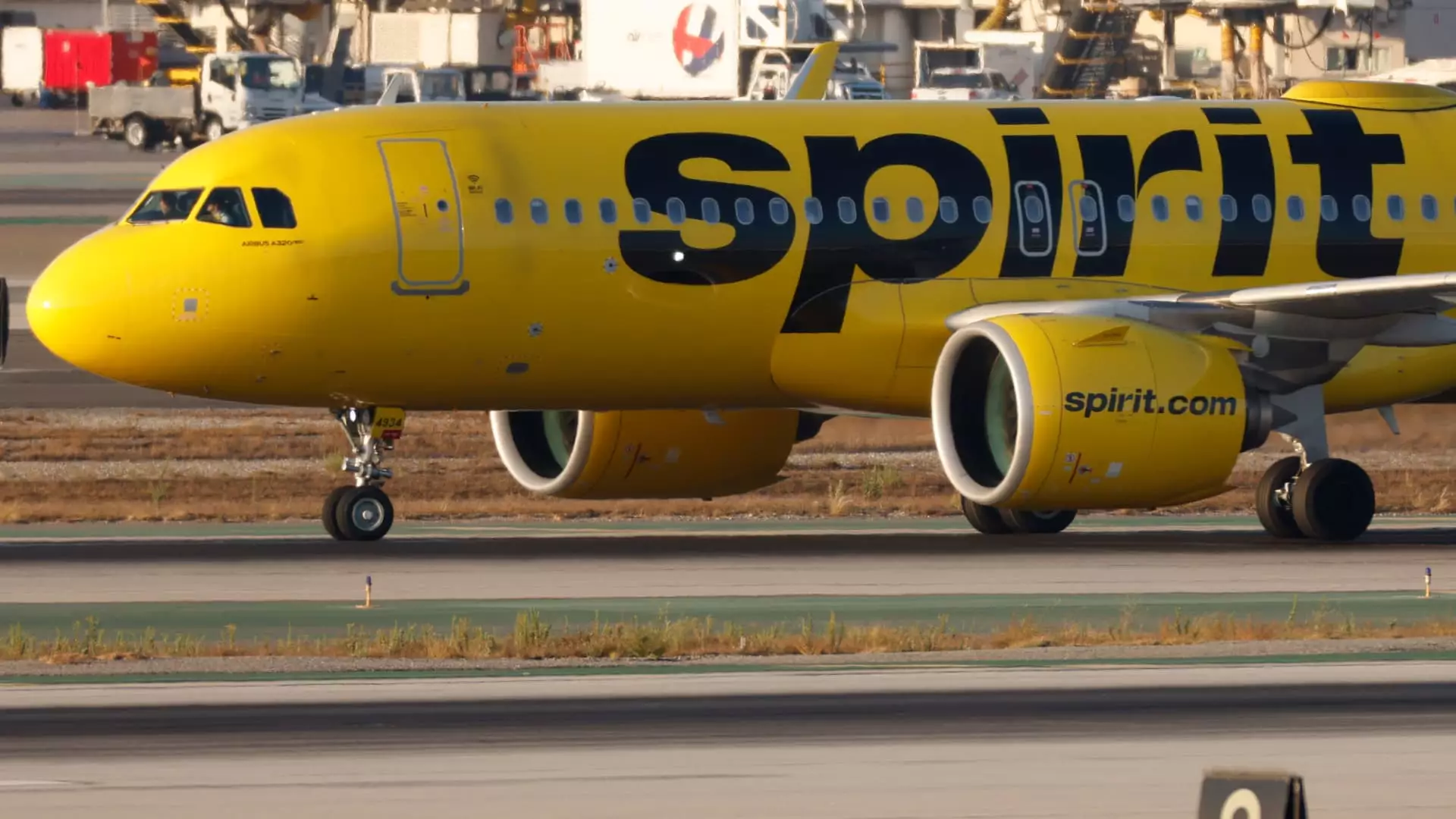Emerging from a grueling bankruptcy process, Spirit Airlines is on the cusp of transformation. CEO Ted Christie has declared that the airline is not only ready to take on competitors like Southwest Airlines, but it also stands poised to redefine its market strategy after years of tumult. The past few years for Spirit have been marred by substantial losses, with a reported net loss exceeding $1.2 billion, but with the restructuring now complete and debts reduced by approximately $795 million, the airline is set to take flight again. The challenges presented by the bankruptcy could very well serve as a crucible for potential innovation and growth.
The Competitive Landscape: Navigating Changes in the Airline Industry
The airline industry landscape is shifting dramatically, particularly with Southwest Airlines announcing its controversial decision to start charging for checked bags starting in late May. This news comes as a shock to many loyal Southwest customers who have long enjoyed the perk of two free checked bags. Southwest’s move marks a significant pivot for the once-untouchable giant in the airline industry, which had differentiated itself through lenient baggage policies even amidst economic downturns. Spirit, who has long employed a model of à la carte pricing, finds itself in a unique position to capitalize on the vulnerabilities of its larger competitor. Customers who appreciated Southwest’s seamless experience may now be searching for attractive alternatives—an opening for Spirit to capture market share.
Market Opportunities: Spirit’s Potential for Customer Acquisition
Christie has openly acknowledged the potential for Spirit to attract customers who might be feeling disenfranchised by the changes at Southwest. “I think it’s going to be painful for a little bit as they find their footing,” he remarked in a recent interview. The challenge for Spirit lies in not just offering lower ticket prices but also enhancing the customer experience in a way that retains newly acquired patrons. Southwest’s recent shifts—the introduction of a basic economy class that doesn’t allow seat assignment or free changes—could also steer customers who previously valued simplicity away from Southwest and into the arms of budget-conscious carriers like Spirit.
Furthermore, as more consumers become attuned to the various options available on platforms such as Expedia, price-driven purchasing behaviors may favor Spirit’s ticket prices, thus boosting its visibility and demand. The shift in Southwest’s policies has created fertile ground for narrative-building, where Spirit can portray itself as the financially savvy option for budget travelers who may have once been dedicated to its competitor.
Revitalization through Strategic Offerings
To capitalize on these emerging opportunities, Spirit Airlines is not just resting on competitive pricing; it is also innovating with its ticket offerings. The airline has recently introduced ticket bundles that include additional perks such as seat assignments and luggage. By presenting itself as a low-cost carrier that understands and responds to evolving consumer expectations, Spirit can gradually reshape its brand image and customer relationships.
The pivot from being a niche low-cost airline to a more encompassing value carrier could yield dividends in customer loyalty. It’s essential that Spirit effectively communicates its unique benefits against the backdrop of competition. By making strategic decisions that prioritize customer experience—like improved bundling options and the potential for a more straightforward booking process—the airline has the capacity to rebuild trust and engagement with fluctuating customer demographics.
Future Growth: A Stronger Spirit Airlines
Although Spirit is smaller than Southwest, it is putting itself in a position to compete strongly in key markets like Kansas City, Nashville, and Milwaukee. The commitment to returning to profitability combined with a willingness to explore partnerships or mergers for future scaling could be pivotal in determining Spirit’s next steps. While the merger talks with Frontier Airlines didn’t come to fruition, Christie has indicated that no options are off the table for collaborative growth, pointing towards a willingness to adapt and evolve as the airline market landscape continues to shift around them.
The future appears bright for Spirit Airlines, now emerging confidently from the shadows of bankruptcy. There is optimism in its strategic repositioning, and the ability to adapt to market changes opens up numerous avenues for growth and a chance to redefine what it means to fly low-cost without compromising on value.


Leave a Reply